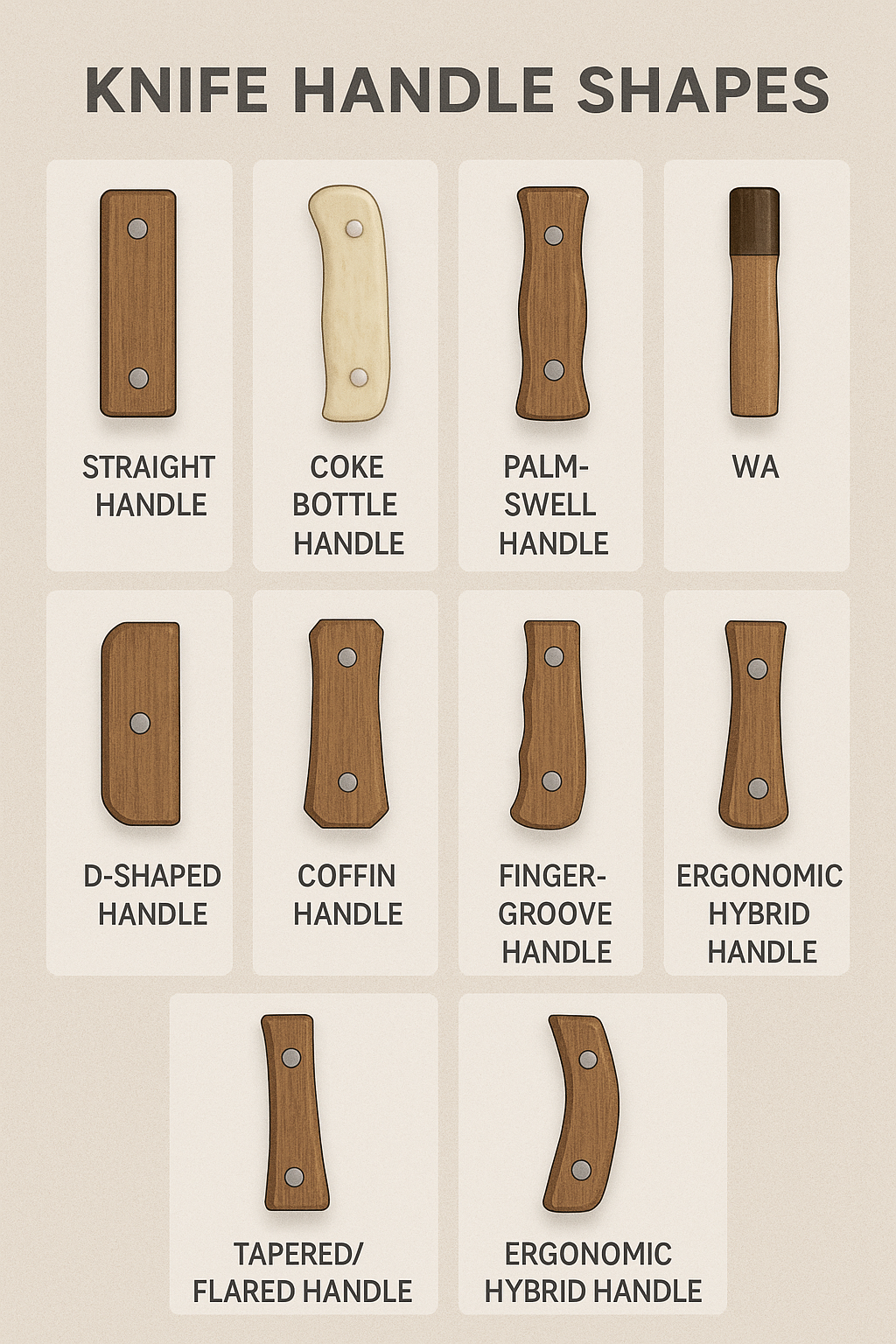
When we think about what makes a knife great, most of us jump straight to the blade—the steel, the shape, how sharp it is. But there’s one part of a knife that doesn’t get as much attention and absolutely deserves it: the tang.
Even though you usually can’t see it, the tang is the part of the knife that gives it structure and strength. It’s the piece of the blade that extends into the handle, and depending on how it’s designed, it can make a knife feel balanced, solid, lightweight—or weak and wobbly.
Whether you're into cooking, bushcraft, collecting knives, or making your own, knowing how different tangs work will help you choose the right knife (or build one you’ll love using).
What Exactly Is a Tang?
The tang is the part of the blade that connects to the handle. It’s not sharpened, but it’s incredibly important. Think of it like the roots of a tree: the shape and depth of those roots affect how stable and long-lasting the tree (or in this case, the knife) will be.
Common Types of Knife Tangs
Let’s go through the most common tang styles and what they’re good for.
Full Tang
This is the one most people have heard of. A full tang runs all the way through the handle, and you can usually see it between the two handle scales. It makes the knife strong and evenly balanced, especially useful when you’re doing tough work like chopping wood or slicing through dense material.
Great for: Survival knives, bushcraft blades, and heavy-duty kitchen knives.
Hidden Tang
A hidden tang is tucked entirely inside the handle. It’s not as thick as a full tang, but if designed well, it can still be plenty strong. These are often used in traditional knives like Scandinavian puukkos or high-end Japanese chef knives. They tend to feel lighter and more elegant in the hand.
Great for: Cooking, carving, or anyone who prefers a lighter, cleaner-looking knife.
Partial Tang
This one only goes partway into the handle. It’s usually found in more affordable knives and is fine for light-duty work. But when it comes to serious chopping or outdoor use, it might not hold up as well over time.
Great for: Light kitchen tasks or decorative knives.
Tapered Tang
A tapered tang starts out thick at the blade and gradually thins toward the end of the handle. It keeps the strength near the blade while cutting down on overall weight, which makes the knife feel a bit more nimble.
Great for: Knives where balance and precision matter—like fillet knives or fine kitchen blades.
Skeletonized Tang
This is basically a full tang with cutouts to reduce weight. You’ll often find these in tactical or everyday carry knives. It keeps the strength of a full tang but trims off some bulk, which is great if you're carrying it on your belt all day.
Great for: EDC and tactical knives.
Rat-Tail Tang
This one looks like a long, thin rod that sticks out from the blade and runs through the handle. It’s usually found in inexpensive or mass-produced knives. It gets the job done for light tasks, but it’s not ideal for anything that puts pressure on the knife.
Great for: Budget-friendly kitchen or display knives.
Push Tang
Also called a stub tang, this style fits into a pre-drilled hole in the handle and is held in with glue. It’s quick and cheap to produce, but not the most secure design for a working knife.
Great for: Light-use or inexpensive knives—not great for hard use.
Encapsulated Tang
Here, the tang is completely encased in the handle—often by molding or pressing it in. You can’t see it from the outside, but it’s usually full length and very secure. These handles are often made from polymer or rubber, making them durable and grippy even when wet.
Great for: Modern outdoor knives or kitchen tools that need to be tough and low maintenance.
Extended Tang
This is when the tang sticks out the back of the handle. Some knives use it as a striking surface for hammering or breaking glass, and others use it as a lanyard loop or to balance the weight of the knife.
Great for: Survival knives, rescue tools, or tactical setups.
So… Which Tang Is Best?
There’s no one-size-fits-all answer—it really depends on what the knife is for. A full tang is great for rough work and durability. Hidden tangs are beautiful and functional in the kitchen. Tapered tangs give balance. Encapsulated tangs are rugged. Skeletonized tangs are light and strong. And push tangs… well, they work when budget is the main concern.
If you’re a knifemaker, try experimenting with a few different styles. If you’re a buyer, take a second look at the tang next time you shop. It might be hidden, but it makes a huge difference in how that knife performs over time.
